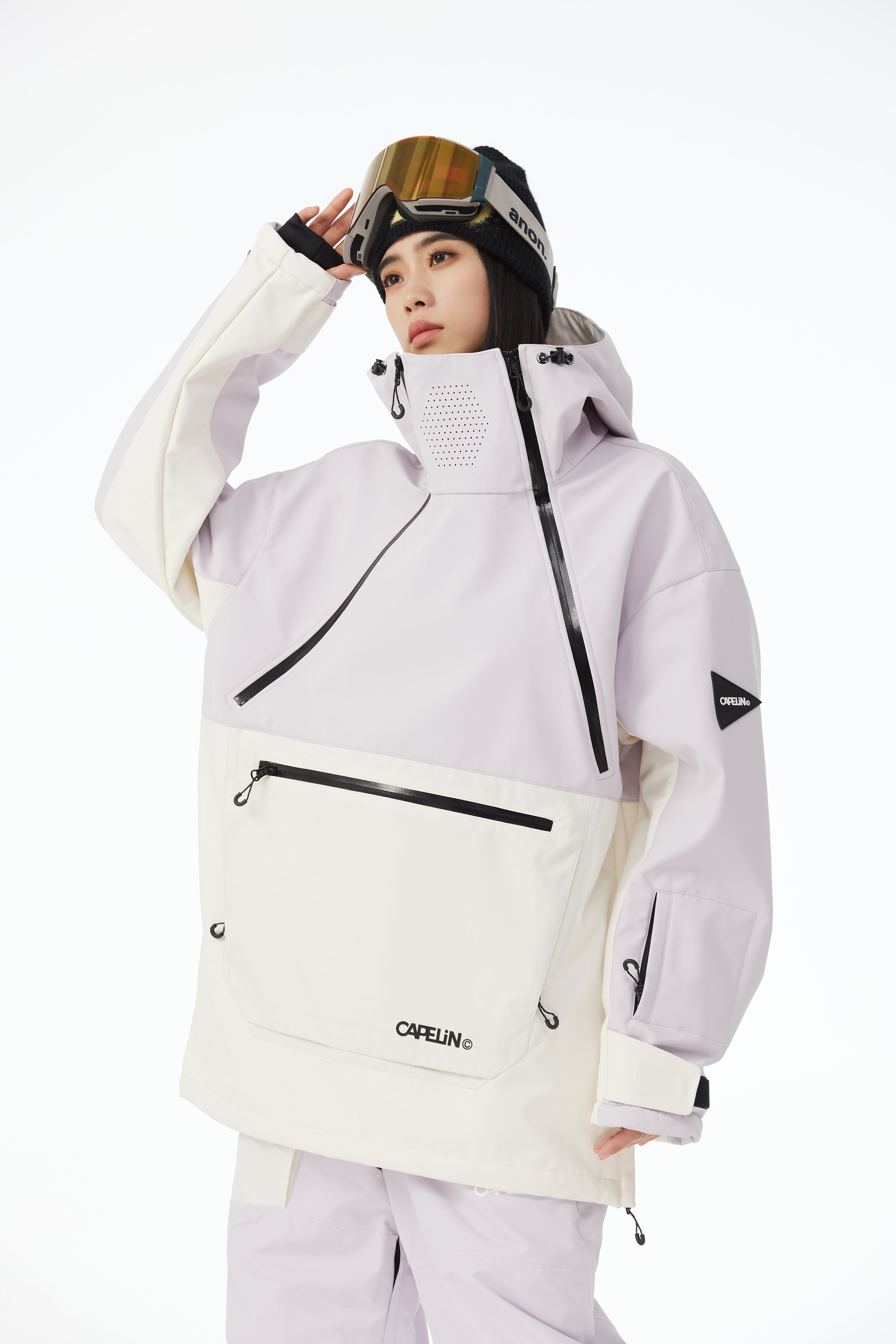Snow pants are specialized outerwear designed specifically for winter sports activities like skiing and snowboarding. Their primary purpose is to provide warmth, protection from wind and moisture, and freedom of movement while participating in these activities.
Materials Used in Snow Pants:
Snow pants are typically made from synthetic materials that are designed to be water-resistant, breathable, and insulating. Common materials include:
- Nylon or polyester for the outer shell (provides water resistance and durability)
- Fleece or synthetic insulation for warmth
- Gore-Tex or other waterproof/breathable membranes
Different Types of Snow Pants:
Insulated Snow Pants:
These pants feature an insulating layer (usually synthetic or down) sandwiched between the outer shell and inner lining. They are designed for colder temperatures and provide excellent warmth.
Waterproof Snow Pants:
These pants have a waterproof outer shell, often treated with a durable water repellent (DWR) coating. They are ideal for wet or slushy conditions and prevent moisture from seeping through.
Breathable Snow Pants:
These pants incorporate breathable membranes or fabrics that allow water vapor (sweat) to escape while preventing external moisture from entering. They help regulate body temperature and prevent overheating during strenuous activities.
Features of Snow Pants:
Zippers and Vents:
Snow pants often feature zippers along the inner or outer thighs, as well as vents at the backs of the legs. These allow for improved ventilation and temperature regulation.
Pockets and Storage Compartments:
Many snow pants include various pockets for storing small essentials like lift passes, phones, or snacks. Some may also have dedicated pockets for goggles or other gear.
Adjustable Waistbands:
To ensure a comfortable and secure fit, snow pants often have adjustable waistbands with velcro, elastic, or drawstring closures.
Other features may include reinforced knees and seat areas for durability, gaiters (inner cuffs) to seal out snow, and suspender loops for compatibility with suspenders or bibs.
Why Do You Need Snow Pants for Skiing?
Protection from the cold:
Skiing often takes place in extremely cold temperatures, especially at higher elevations or in regions with harsh winter climates. Snow pants are designed to provide excellent insulation, trapping body heat and preventing the cold from penetrating through to your skin. This insulation is essential for maintaining a comfortable body temperature and preventing issues like frostbite or hypothermia.
Protection from snow and moisture:
Skiing involves frequent contact with snow, whether through falls or the constant exposure to snowfall. Snow pants are constructed with waterproof or water-resistant materials, ensuring that moisture from melting snow or light precipitation doesn't seep through and leave you feeling damp and uncomfortable.
Enhancement of comfort:
In addition to warmth and waterproofing, snow pants are designed with stretchy, breathable fabrics and a relaxed fit, allowing for unrestricted movement and freedom of motion. This level of comfort is essential for maintaining proper form and technique while skiing, which can involve various twisting and turning maneuvers.
Improvement of performance:
By keeping you warm, dry, and comfortable, snow pants help optimize your physical performance on the slopes. When you're not distracted by discomfort or restricted by wet, cold clothing, you can focus more on your skiing skills and enjoy the experience to the fullest.
Safety considerations:
Snow pants play a crucial role in safety on the slopes. By preventing exposure to the elements, they reduce the risk of hypothermia, frostbite, and other cold-related injuries. Additionally, their waterproof properties help protect you from the potential dangers of wet clothing, which can lead to rapid heat loss and increased susceptibility to accidents or injuries.
Choosing the Right Snow Pants for Skiing:
When selecting snow pants for skiing, there are several factors to consider:
Climate and weather conditions:
Consider the typical temperatures and precipitation levels at your preferred ski destinations. Colder climates may require more insulation, while wetter conditions demand enhanced waterproofing.
Personal preferences and experience:
Your individual preferences for warmth, breathability, and mobility should influence your choice of snow pants. Additionally, your level of experience and the intensity of your skiing activities may dictate specific features or levels of protection.
Budget and affordability:
Snow pants can vary significantly in price, depending on the materials, brand, and features. Determine your budget and prioritize the most important factors to find a balance between cost and performance.
How to Wear and Care for Your Snow Pants?
- Wear a base layer of moisture-wicking thermal underwear to keep your skin dry.
- Add an insulating mid-layer, such as fleece or wool, for extra warmth.
- Ensure your snow pants fit over your base and mid-layers without restricting movement.
- Consider wearing gaiters over your boots to prevent snow from entering.
Properly putting on and taking off snow pants:
- Untie or unzip the legs fully before stepping into the pants.
- Pull the pants up over your boots and secure the waistband.
- To remove, unzip or untie the legs and carefully pull the pants down over your boots.
Cleaning and drying instructions:
- Follow the manufacturer's care instructions for washing and drying.
- Use a gentle, technical fabric cleaner or mild detergent.
- Avoid using fabric softeners, which can compromise waterproofing.
- Air dry or tumble dry on a low setting, ensuring the pants are completely dry before storing.
Storing and maintaining snow pants:
- Hang or store snow pants in a cool, dry place when not in use.
- Reapply waterproofing treatments or durable water-repellent (DWR) coatings as needed.
- Inspect pants regularly for any rips, tears, or damage and repair or replace them as necessary.
Conclusion
Choosing the right snow pants and properly caring for them is crucial for maximizing their performance and longevity. By following the tips and guidelines outlined, you can ensure that your snow pants will keep you warm, dry, and comfortable throughout your skiing adventures, allowing you to focus on refining your technique and making the most of your time on the mountain.












